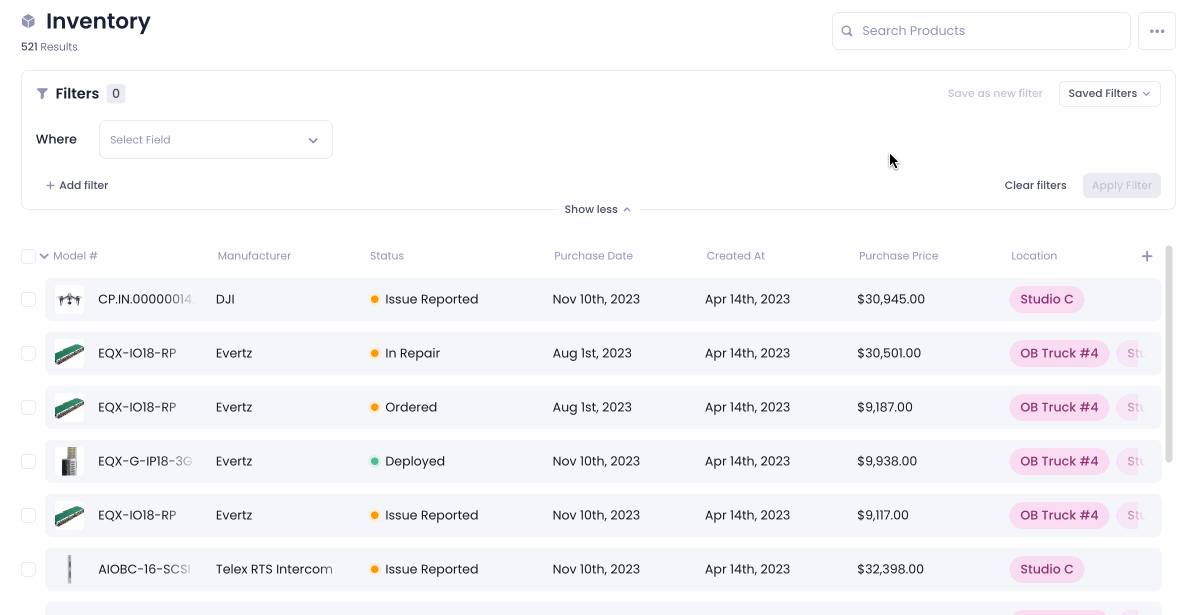Searching For Assets On The Inventory Page
A key element of the inventory page is its search functionality. Search allows you to find specific assets in your Beam inventory and/or specific asset groups (e.g. "all assets made by DJI"). In this tutorial, we will show you how to use Beam's Basic Search and Filters to make your inventory management workflow more efficient.
Before You Begin
Basic Search and Filters live on the Inventory Page of your Beam workspace. If you are unfamiliar with the Inventory Page, we recommend you check out our documentation on Navigating the Inventory Page.
Basic Search
To use Beam search, type in your query into the search bar at the top right of the inventory page. The assets that match your query will populate in the asset list below.
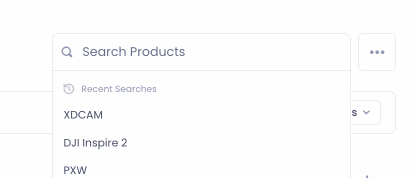
Currently, the search bar lets you use the following fields as search queries:
- Product Name
- Model #
- Serial #
- Manufacturer
If you want to search using any other attributes, you will need to use Filters.
Filters
Filters let you create multi-conditional searches to surface specific asset groups that you want to manage together. Want to glance at all the assets from Studio A that were discontinued by their manufacturer? Need to reassign all of User A's in-repair assets to User B? Filters have got you covered. In the rest of this tutorial, we'll explain what Filters are, how they work, how you can set them up, and how you can save frequently used Filters for quick access.
Structure of a Filter

Each Filter consists of one or many conditions that will be applied to the assets in your inventory. Each Filter condition consists of three components:
- Field - The specific attribute or column in a dataset on which filtering is applied. You can Filter by any field that is configured for your assets. In the example above the field is “Location”
- Operator - The operator determines how the field's data is compared to the value. In the example above the operator is “is.” NOTE: Operators change based on the data type of the field (see table below).
- Value(s) - The specific or criteria that the field's data is compared against, using the operator. In the example above the value is “Studio B”
Field Types

Creating a Filter
Filters are available at the top of the inventory page between the search bar and your asset list. To open up the Filter configuration click on Show More.

With the Filter configuration open, select the attribute that you want to Filter by from the dropdown menu. This will reveal the corresponding operators and values for your selected field. Select your desired operator and value to complete the Filter condition.
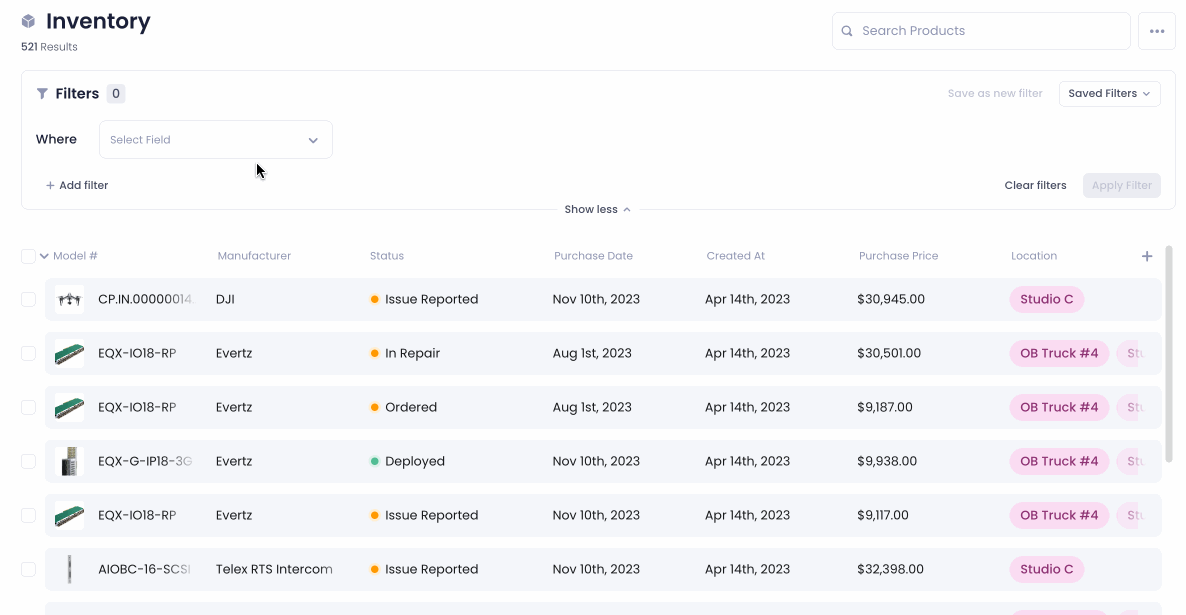
For categorical fields (Status, Assignee and Tags), you can select multiple values for each condition. When multiple values are selected, the Filter will treat the multiple values using an "OR" operator. This means that for an asset to appear in the search results, it needs to meet the Filter condition for only one of the selected values.

To add additional conditions to your Filter, click on Add Filter. When you add multiple conditions, the Filter will apply an "AND" operator. This means that for an asset to appear in the search results, it needs to meet all the Filter conditions in your Filter.

Once you're finished setting up your Filters click on Apply Filter button to execute your search.
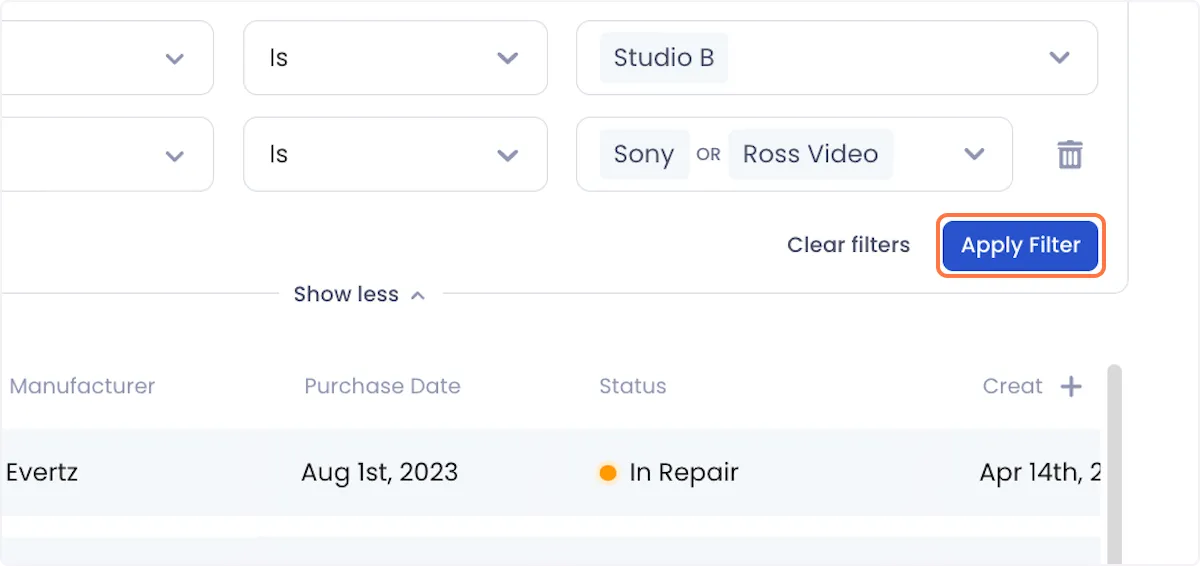
Saving Filters
If you find yourself using the same Filter repeatedly, you should save it to avoid the hassle of setting it up again in the future.
To do this, set up the Filters you want to save and click on Save as new Filter button at the top right of the Filter configuration. Give the Filter a descriptive name and click on Save Filter.
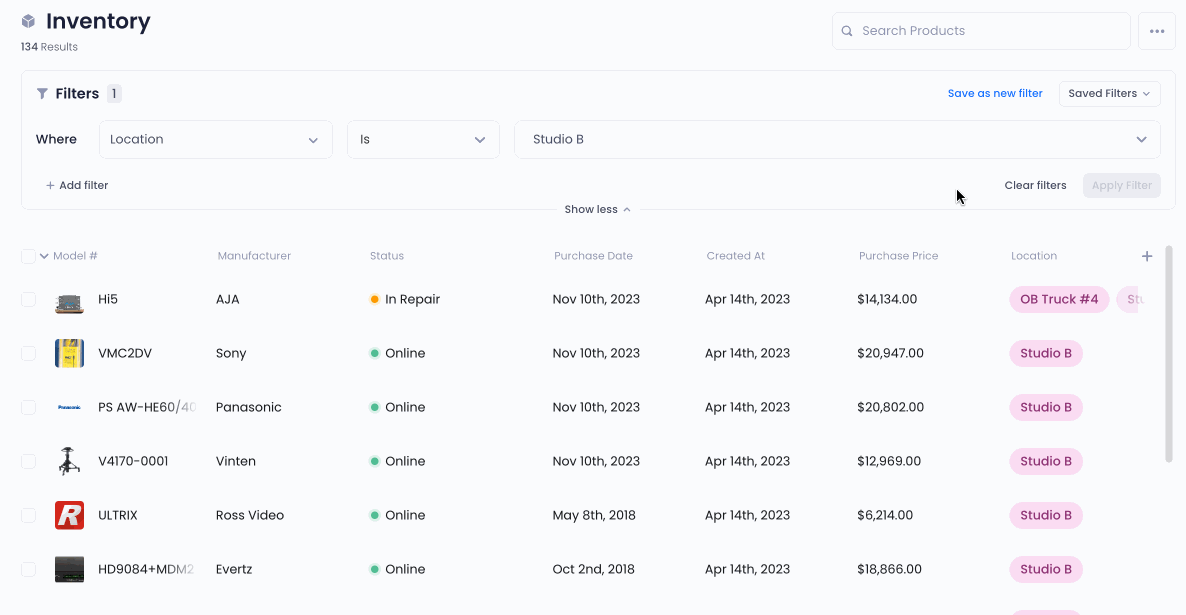
The Filter will now be accessible for easy future use in the Saved Filters dropdown.
